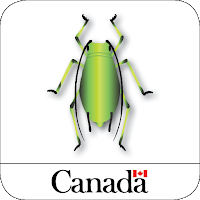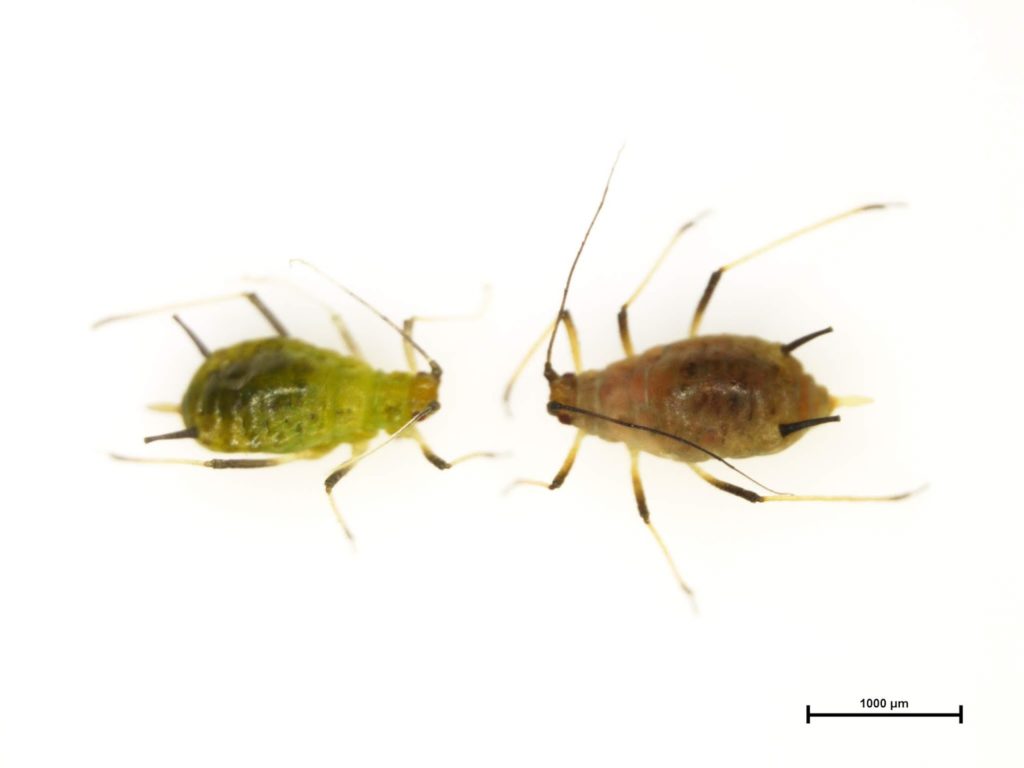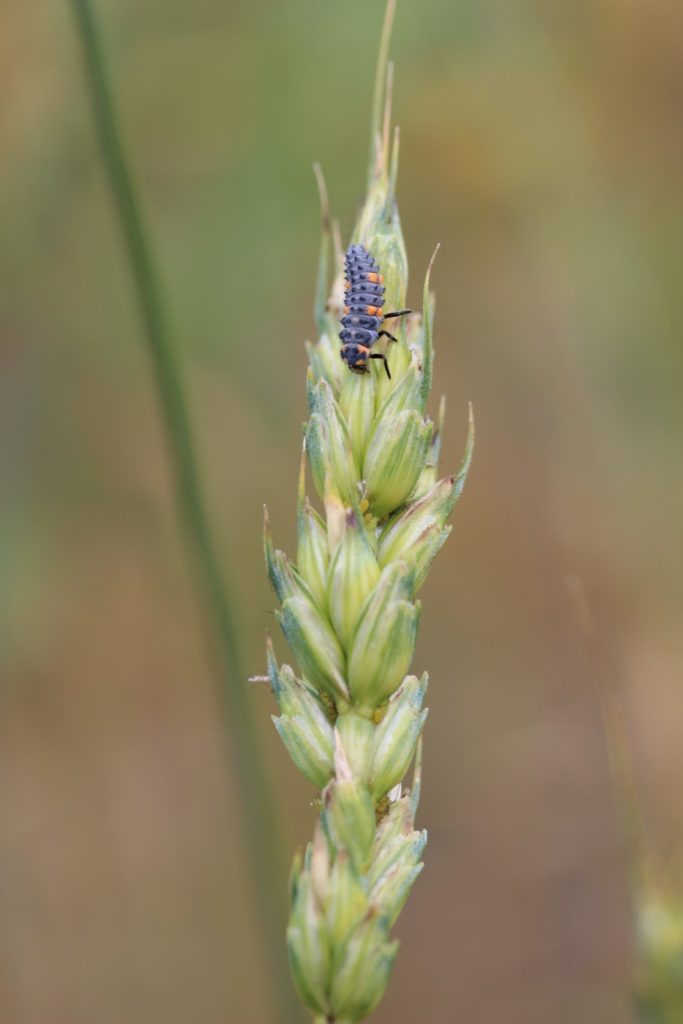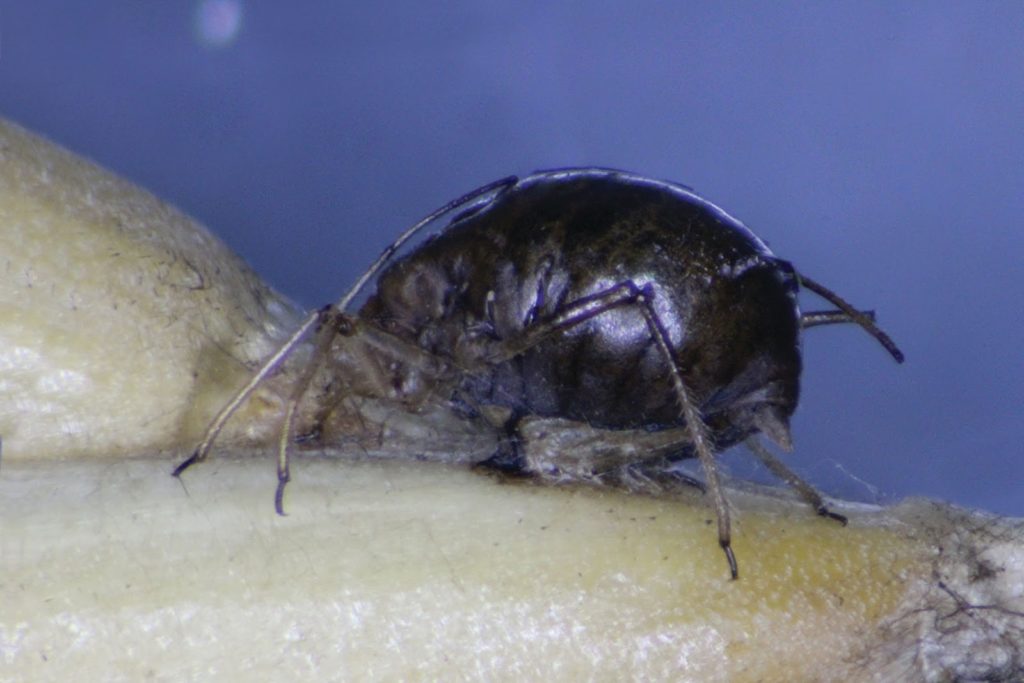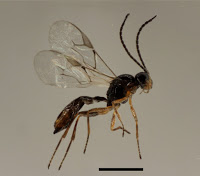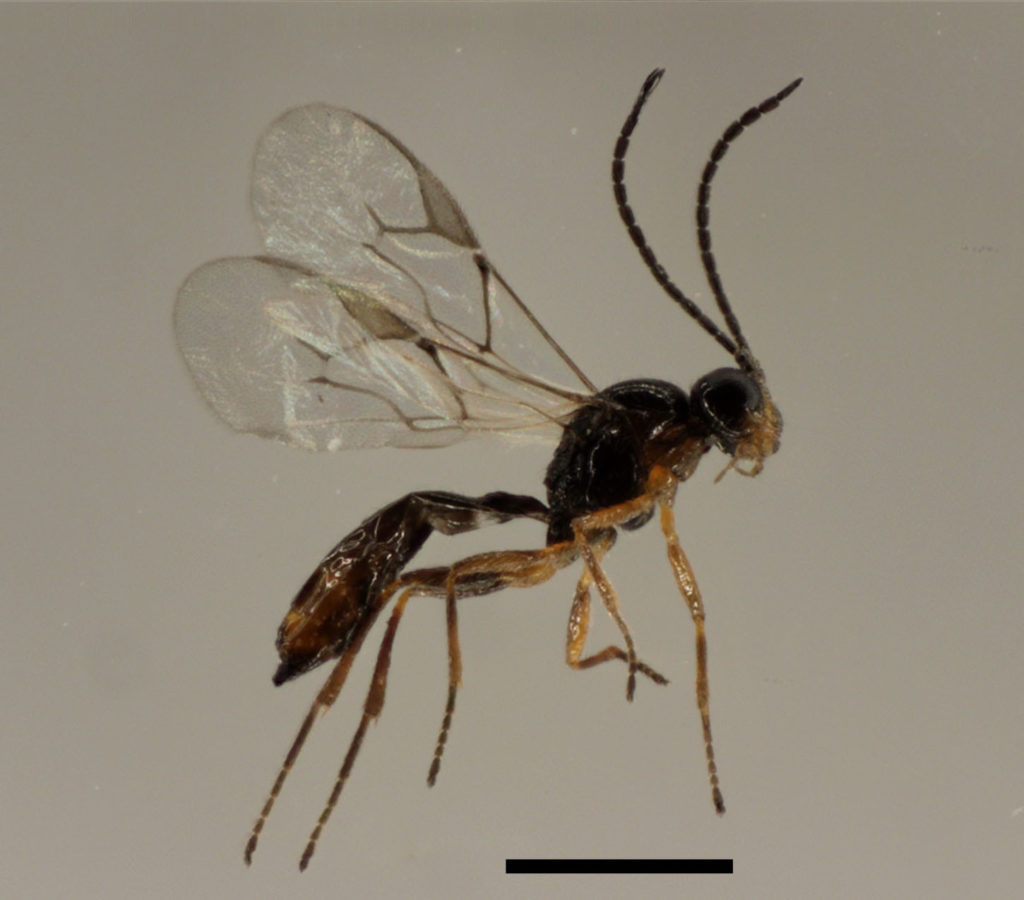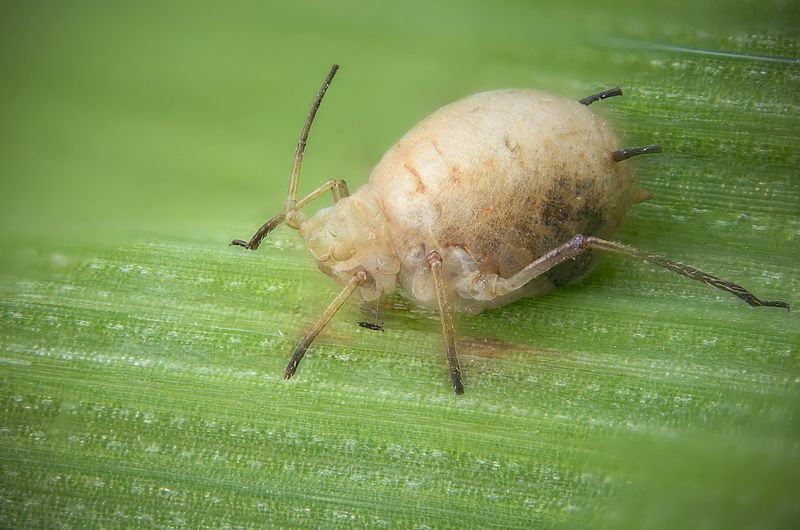The English grain aphid (Sitobion avenae) is a pest that infests wheat, barley, oat, rye, timothy, and canaryseed. Adults are 1.5 to 2 mm in size and yellow-green to reddish-brown with black antennae, leg joints, and cornicles. Nymphs are similar in appearance, but smaller in size.
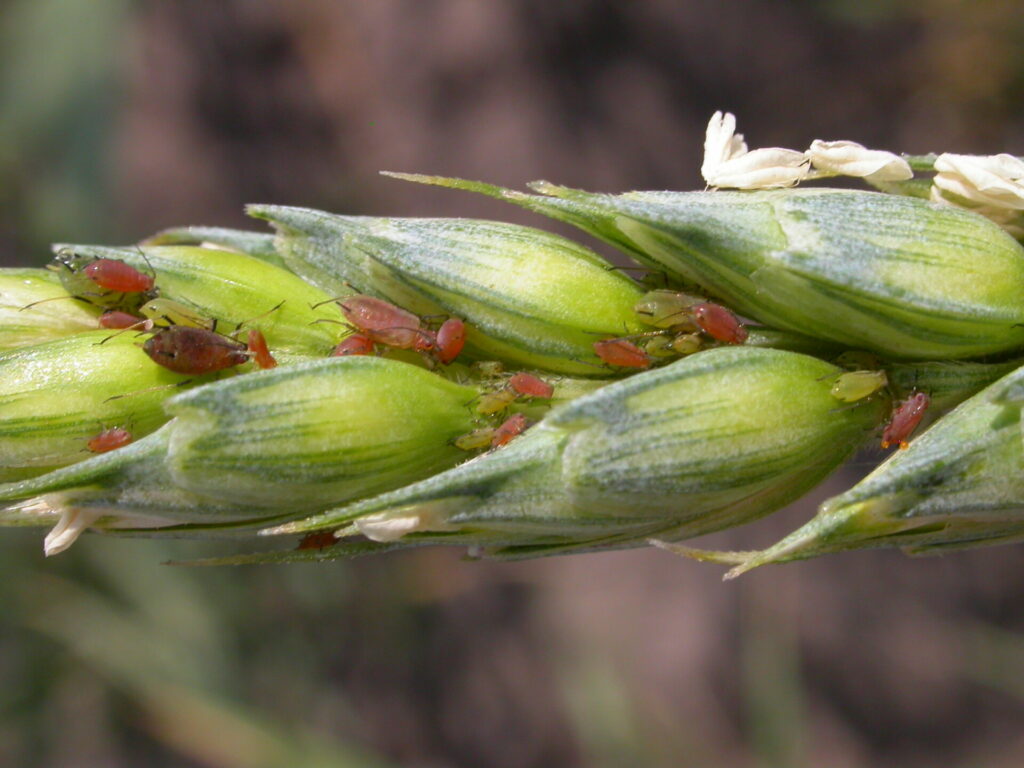
Aphids are typically found on the heads of cereal crops, where they feed on the ripening kernels. Feeding damage results in shriveled kernels and leaf discoloration. Severe infestations result in large visible bronze or brown patches in the field. English grain aphids produce honeydew, a sugary liquid waste, that can promote the infestation and growth of saprophytic and pathogenic fungi on cereal heads. This aphid is also a vector for barley dwarf virus, which can severely stunt plants and prevent heading.
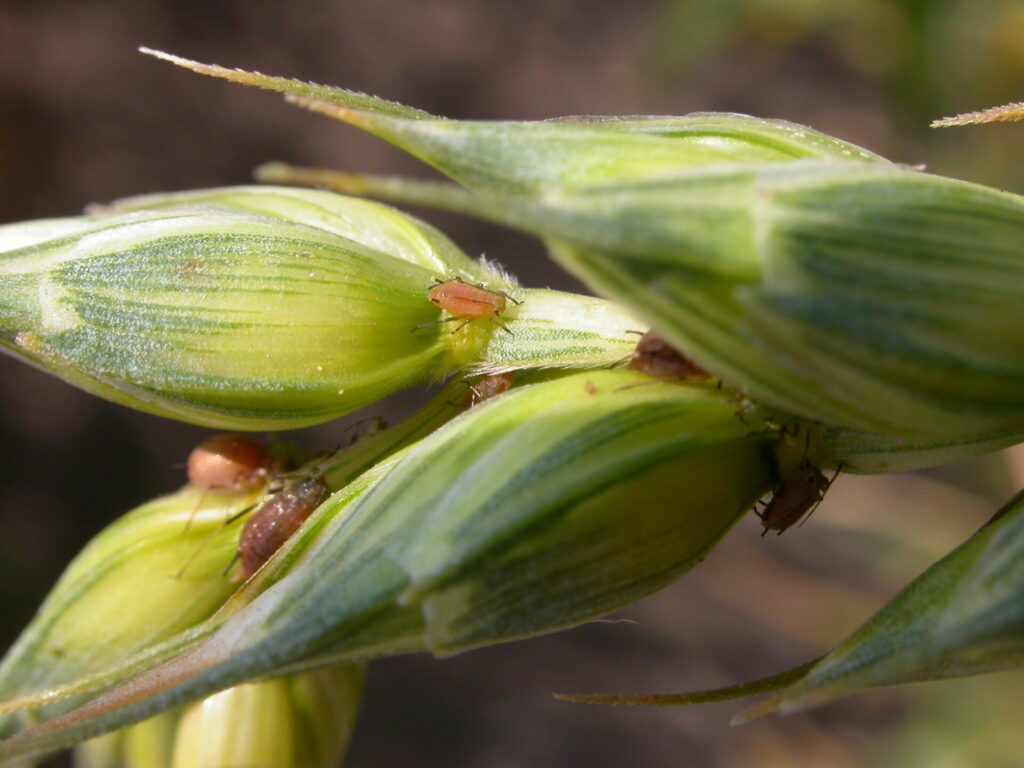
The economic threshold for English grain aphids in spring wheat in western Canada is 12-15 aphids per head prior to the soft dough stage. The number of aphids per head should be recorded on 20 tillers at five different spots scattered throughout the field to ensure an accurate estimate of their population density. Scouting should occur from June until the soft-dough stage is reached. Early seeding may allow crops to move past susceptible stages before aphid populations reach damaging thresholds and reduce risk for barley yellow dwarf virus.
More information related to English grain aphid and other aphid species can be found on provincial the Manitoba Agriculture page. For more information, check out the English grain aphid page in the Field Crop and Forage Pests and their Natural Enemies in Western Canada: Identification and Management field guide. (en français : Guide d’identification des ravageurs des grandes cultures et des cultures fourragères et de leurs ennemis naturels et mesures de lutte applicables à l’Ouest canadien).

